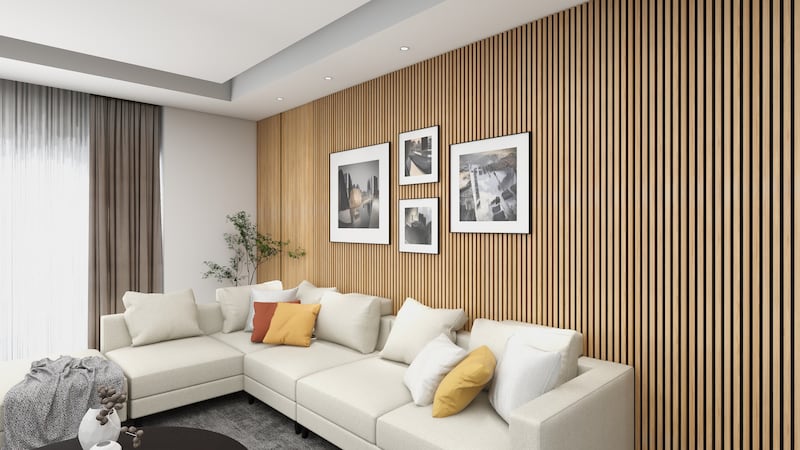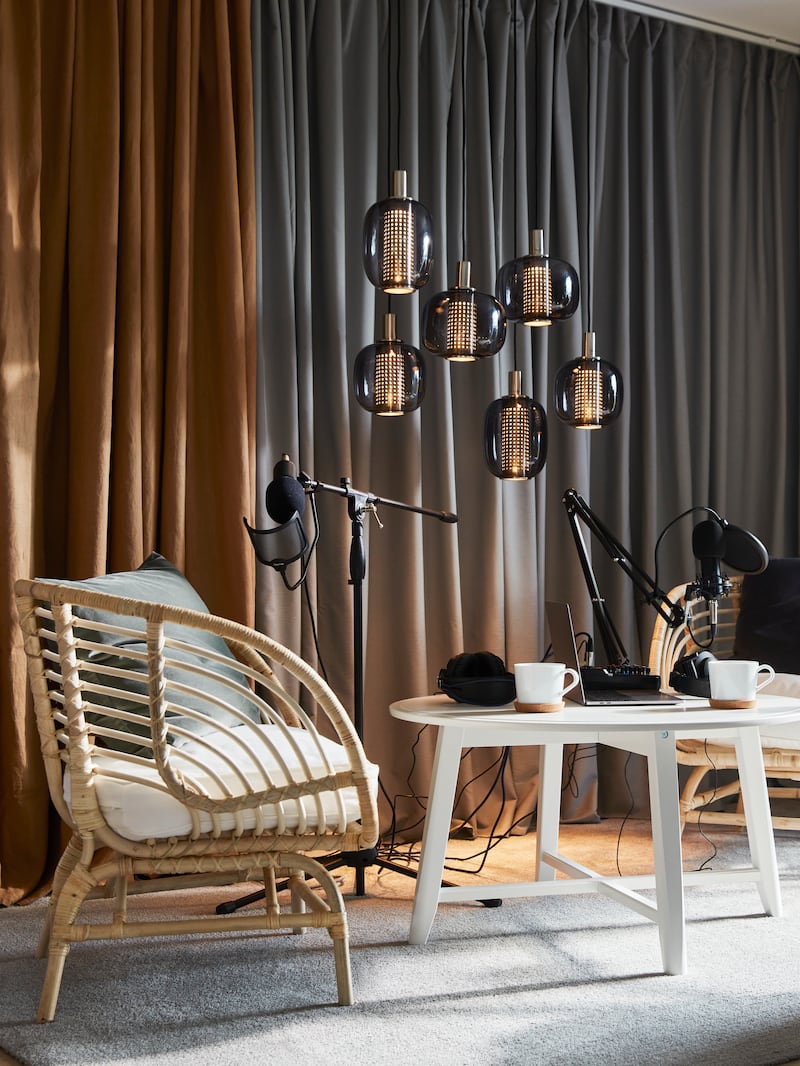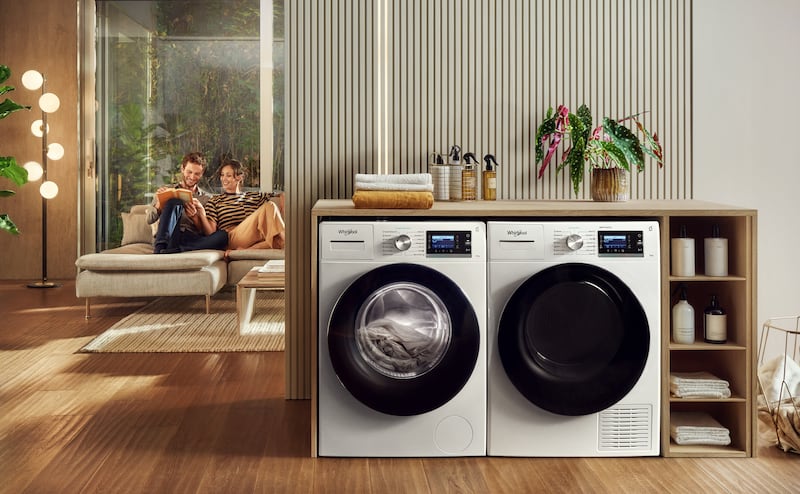We live in a noisy world. As well as the myriad of visual stimuli we are surrounded by in our towns and cities, there is also environmental noise to contend with, such as that from traffic, trains, aircraft and construction work.
Meanwhile, inside our homes, the dishwasher beeps when its cycle is finished, as does the washing machine and the dryer, with some sounding like a ghost has been trapped inside. The microwave hums, as do the oven and the fridge, and never in a harmonious fashion. And that’s before the neighbours get home from school and work on any given day to add to the cacophony. So, how can we go about ensuring our home is as peaceful as possible?
What to watch out for
“Noise [reduction] is a part of construction that is like a lost cousin,” says Dermot Kearns of HPC building materials group. There isn’t a lot of focus put on it, he says, yet he estimates that a large proportion of houses built over the last 40 years have an acoustic problem.
If you’re in the market to buy a home, he advises you view the property when the house is “active” in the evenings, when neighbours are home.
READ MORE
As an issue, noise is relatively new, according to building surveyor and Society of Chartered Surveyors Ireland member Stephen Scott of Scott Murphy. It was in 1912 when part E of the building regulations first provided for the treatment of sound transference in new developments, he says, adding: “That first set of regulations extended to six or seven pages.” In contrast, the current regulatory document is far more comprehensive, he says. Dating from 2015, “it extends to between 80 and 90 pages”.
However, when renovating an existing home, there is no such requirement to ensure it is acoustically sound, says Kearns.
Different homes have different construction methods that also need to be factored in. An engineer or building surveyor will be able to determine what the party wall and ceilings are constructed from, Kearns says.
“An insulated house should cover both thermal and acoustic considerations. A clearly defined building specification document should set out what works are to be done on the property in relation to thermal insulation, acoustic insulation, air-tightness and fire-stopping requirements. All four are interrelated,” he says.
It is usually the architect or design team that puts the building specification document together, says Kearns. Having worked in the building supplies industry for more than 40 years, he says he is often called out to clients to help compose the specification document to ensure they have the correct materials for their home.
When he writes what he calls “a good specification document”, he includes three different options, each at a different price point. He describes these as “good, better and best options,” so the client can make an informed decision. Costs do not include application and other labour-related costs.
“Ninety per cent go for the ‘better’ option. They usually feel the ‘best’ option is too expensive,” he says.
Apartment living
In multi-unit developments such as apartment blocks, where the flooring is likely a concrete slab, an acoustic layer is required between the slab and the apartment’s flooring, especially if it is timber or tile, says Scott. “You will only know this is a problem when you hear your upstairs neighbour walking around,” he says.
In some apartments you could be able to hear your neighbour flushing their toilet as the drain pipes may run through the units or through the corridors, Scott explains. This is an example of impact sound and one solution is to insulate around said pipes, he says.
In other developments a plasterboard layer may be used below the concrete slab to create a ceiling. “The gap between the plasterboard and the concrete can act like an amplifier,” says Scott.
Simple solutions
For those living in houses where you share party walls, the noise is often of the ambient kind. You may be able to hear voices or music from their phone, radio or television, or people talking or arguing.
“If you can hear next door, the party wall is not acoustically sound,” say Kearns. “The sound originates on the neighbour’s side, so in theory the sound intrusion should be tackled at source, and the problem treated on both sides of the wall. But most neighbours are not going to let you into their home to remedy it,” he says.
Nevertheless, there are ways to minimise noise intrusion, says Scott. In older houses, such as his own redbrick, which dates from 1910, there’s often just a single layer of block or brick between you and the adjoining property. Any gaps will let sound through, but you can use acoustic plasterboard to cover them, he says.
Mustwall 33B is one of several specialised products from Co Monaghan-based company Shush that he found when researching solutions for clients. This option comes with a layer of rubber matting affixed that you lay facing the neighbouring property, he explains. “I’ve used it to good effect,” he says, in the four rooms that share his party wall, in the alcoves on either sides of the chimney breasts.”
As a solution it worked for him, but he’s not suggesting it will still work if your neighbours turn the music up to max volume, but it certainly had “a positive effect” in his household.
As for floors, he used an acoustic underlay on his attic floor, where his teenage son sleeps. “We don’t hear him at all,” he says.
The same company also sells vibration pads, something Scott says is essential to lay under a heat pump to dim the noise it emits. He also suggests using one under a vibrating dryer or a dishwasher – a particularly useful option if living in an apartment.
Decorative changes you make to the house may also affect sound permeability, Kearns says. He says spotlights, for example, the recessed illumination that requires you to cut holes into the ceiling, stud wall or floor, is akin to inserting mini windows into said surface. In a kitchen ceiling, for example, it will mean that sound may leach from it to a bedroom above, he says.
Sound insulation

“Sound insulation is definitely an area of interest to our customers and is more difficult to advise on than thermal insulation,” says Robert Hickey, head of building materials at Chadwicks Group.
“If a house is cold there are some basic steps you can take, such as insulating the attic or upgrading the insulation levels in that attic. An acoustic solution is more invasive. It needs a whole buildout that will be required again at the beginning of a retrofitting or refurbishment,” he says.
He says a simple DIY solution to reduce an echo in a space such as a livingroom with timber flooring and lots of hard surfaces is to affix acoustic panels to the wall. These feature “a sound-absorbing felt-covered backing board that help absorb sound waves, reducing echo and improving clarity during conversations,” he says.
“These panels have a modern, stylish timber look, and their popularity has surged over the past two years. The panels can be screwed or glued directly on to the wall. For added sound deadening against noise from adjacent rooms you could add a batten frame with glass mineral wool or stone wool insulation between the battens before installing the panels,” says Hickey.

The addition of soft furnishings will also help absorb sound, such as cushions, curtains and rugs underfoot. Ikea sells a range of sound-absorbing soft furnishings and fixtures, from its Gunnlaug sound-absorbing curtains, from €55, to Mittzon acoustic screens, from €135.
Problematic types of sound
Dermot Kearns of HPC Groupnotes the following three problematic sound types:
Ambient sound: such as radio, TV, speech and music.
Impact sound: such as noise of a person’s feet walking on the floor above, travelling from upstairs to downstairs, or a door banging in the shared space of an apartment block.
Flanking sound: when sound escapes through either badly filled insulation, gaps or penetrations such as plug sockets, pipes for radiators or when plasterboard isn’t sealed behind skirting boards. “This sound will go around the wall, over the wall, under the wall if there are gaps in it or through the wall in cases such as when two plugs are set back to back on either side of the wall.”
He says sound is always going to leach from room to room within your home because while it may be thermally insulated, it is likely not acoustically insulated but that such issues can be isolated.
Quietening down the kitchen

There have been great technological advancements in noise reduction in laundry and kitchen appliances, says Ger Shortall of Harvey Norman.
“In laundry, older models of washing machines had a belt and pulley system,” he says. “A sign that a machine was on the way out was increased noise levels, but newer models feature direct-drive motors that cut down on the vibration and movement of the drum.” Some Whirlpool and Samsung models include what Shortall describes as “ribs on the outer cavity of the washer that help absorb sound”.
Whirlpool sells a Supreme Silence washing machines and dryers that have additional insulation which make them a popular choice for those installing them in a kitchen, rather than a separate utility room, he says.
Most new dishwashers should carry a decibel-level sticker, he says, which is something you should keep an eye out for. “Most are between 45dB and 50dB. For context, a whisper is about 30dB while normal conversation is about 60dB, he says. Whirlpool and Bosch do very quiet models at 38dB.”
When it comes to kettles, Russell Hobbs quiet-boil models are a bestseller while Dreame is a new robot vacuum cleaner with a silent mode that Shortall says you can run underfoot while sitting on a video call when working from home, with no noise disruption.




















